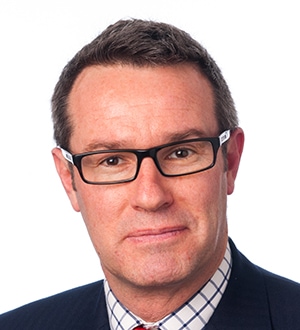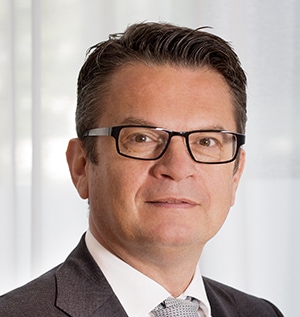Calls for a greener, fairer world are growing, and an increasing number of companies are realizing the value of mitigating the pursuit of short-term profits in favor of long-term systemic—and corporate—health.

Kids skipping school may not be able to change the world, but the climate-change school strikes started by Swedish teenager Greta Thunberg in November 2018 show how the sustainability debate is heating up. By the end of May this year, student protests had affected 131 countries, and politicians worldwide have been snapping selfies with the young activists.
It’s not just kids. Everyone’s expectations are changing: 62% of 30,000 consumers in 35 countries surveyed by Accenture in late 2018 want companies to take a stand on issues such as sustainability, transparency and fair employment practices. Today, 90% of CEOs state that sustainability is important to their company’s success, according to the University of Michigan’s Erb Institute.
Companies, investors and banks are committing to sustainability. In May, German auto manufacturer Mercedes-Benz made a promise to go carbon neutral by 2039—no mean feat for an auto maker. From 2012 to October 2018, assets managed in accordance with environmental, social and governance (ESG) principles increased 60%, to reach $1.05 trillion, according to Morningstar. “Momentum is building,” says Eoin Murray, head of investment at London-based Hermes Investment Management, which has $44.4 billion of assets under management. “It’s not a fad.”
Sustainability isn’t just about climate change, which is clearly a bottom-line risk factor. Sustainability includes ethical governance, recruiting from the full talent pool and respecting the community that provides customers, suppliers and employees. How are companies, banks and investors responding to this cultural shift?
ESG criteria are becoming standard in credit analysis: Standard & Poor’s, Moody’s and Fitch Ratings now include ESG factors in their rating decisions. And Morningstar says the number of funds adding ESG criteria is “exploding”: 73 included such criteria in the first quarter of 2019, compared to 51 in the whole of 2018. Last year, BlackRock CEO Laurence D. Fink said he expects “every company” in which his firm invests to “show how it makes a positive contribution to society”—effectively aligning the world’s largest investor with sustainability.
Murray gives such advances a cautious welcome. “There’s still box-ticking, but real change is underway,” he says. The next step is to translate words into action. “We need a change in voting patterns when it comes to compensation packages, for instance, which are a great way to drive messages home to the corporate C-suite,” adds Murray. Some firms are putting their money where their mouth is: Legal & General, one of Europe’s largest asset managers, with $1.3 trillion under management, voted against the election of 3,000 directors globally in 2018, for example.
 Cardozo, Black Bear: Circularity doesn’t really work with downcycling. |
What’s driving change? There are two commercial imperatives. First, millennials are nearly twice as likely to invest in funds focused on social or environmental outcomes, according to a Morgan Stanley report. Investment firms want to capture these new investors. Second, investments in ESG-focused companies outperform because they have a lower cost of capital and a superior risk profile, according to MSCI. Murray says there is also “a growing sense that our industry, which is responsible for allocating $75 trillion of capital, should act as a good steward.”
Murray says a broader cultural change is still required. “[Many investors] focus on the short term,” he explains. Indeed, under US fiduciary law, an investment adviser’s only duty is to maximize financial returns against risk. “If you extend your horizon to the long term, then sustainability challenges become existential financial risks,” Murray points out. “Investors should look a decade ahead, calculate the value of what will become stranded coal and oil assets, for example, and then discount it back to today. It could make a big difference to their investment decisions.”
Short-Term Pains, Long-Term Gains
A report from the Network for Greening the Financial System (NGFS), a 36-member group of central banks, makes it clear that climate change is an existential issue for financial institutions. A letter published concurrently in April by Mark Carney, governor of the Bank of England; François Villeroy de Galhau, governor of the Bank of France; and Frank Elderson, chairman of NGFS, says a “sudden collapse in asset prices” driven by climate change is possible without immediate action.
Léon Wijnands, head of Sustainabiliy at ING Group in Amsterdam, agrees. ING sees the issue mainly in business terms. “Our clients are facing massive transition challenges as they adopt technology for a low-carbon world,” says Wijnands. “That transition needs to be financed, and we want to do it. It’s also about future-proofing and derisking ING for our shareholders, which are increasingly focused on issues like the business impact of climate.”
ING’s approach is not pain-free. “We want to work with tomorrow’s winners rather than yesterday’s dinosaurs,” says Wijnands. “We engage with clients to help them change; but ultimately if they do not, to the extent that they become a risk, we will have to reconsider our relationship with them.”
Coal is a case in point. ING is aiming to substantially reduce its financing of coal mining operations and end all financing for coal-fired power plants by 2025. “It’s simply impossible to future-proof coal,” he adds.
 Morden, Kimberly-Clark: Pursuing outstanding corporate citizenship is not only good for business; it’s great for our employees and communities. |
Last year, Standard Chartered also decided to stop financing new coal-fired power plants because of the climate crisis. “It was not an easy choice,” says Daniel Hanna, head of Sustainable Finance at Standard Chartered in London. “For some people, the choice is using coal or no power.” To help fix this problem, the bank set up a new sustainable finance team in October 2018. It is promoting solutions like blended finance, which mixes development finance with commercial capital. Standard Chartered has facilitated $5 billion over the past three years, but Hanna believes the sector will grow much larger.
Hanna is equally ambitious about the potential for capital markets innovation. He describes the $172 billion-plus green bond market as just a first step. “We need to use financial flows to solve a wider range of the world’s big challenges,” Hanna adds. Last year, Standard Chartered helped the Seychelles raise $15 million, with the World Bank’s support, via the world’s first blue bond designed to support sustainable marine projects.
Meanwhile, ING has gained plaudits and market share with its sustainability loans, in which corporate borrowers’ costs are linked to sustainability improvements. “For companies, sustainability-linked financing broadens their investor base. Importantly, it gets the CFO involved in sustainability issues,” says Wijnands. “But in the post-Paris Agreement world of 2050, we expect all financing to be green financing. The rest won’t exist.”
The current plethora of standards and frameworks around green financing—and sustainability more generally—can be confusing, concedes Wijnands. “There are 50 shades of green, and that can be counterproductive,” he says. “But it took 500 years from the invention of [double-entry] bookkeeping by the Italians to get to IFRS [international financial reporting standards]. In five years, the picture may look completely different.”
Aligning With Client Expectations
If consumers are focusing on sustainability, and regulators are encouraging it, then smart companies will clearly look to improve their sustainability performance. But committing to sustainability and adapting your business model to it are two different things. So what does a sustainable business look like?
Kimberly-Clark, a global personal-care corporation, is on the front lines when it comes to sustainability. It produces mostly paper-based disposable products like Andrex toilet paper and Huggies disposable diapers, and is one of the world’s largest buyers of market pulp. It leads, in part, because it sells directly to consumers, who are rapidly embracing sustainability.
 Murray, Hermes: In the long term, sustainability challenges become existential financial risks. |
In 2016, Kimberly-Clark launched a five-year plan, Sustainability 2022, to ensure it has a positive impact across five priority areas: social impact, forests and fiber, waste and recycling, energy and climate, and supply chain. The results have already exceeded expectations. Kimberly-Clark’s latest sustainability report shows an increase in the amount of virgin fiber in its tissue products taken from sustainably managed forests to 84% in 2017, up from 7% in 2006 and 95% of its manufacturing waste has been diverted from landfills.
Kimberly-Clark has also committed to renewable energy. In May, it began using a new solar roof, one of Singapore’s largest solar-energy installations, at its Huggies manufacturing facility there. Renewable power is growing rapidly: It makes business sense and wins environmental plaudits. BloombergNEF calculates that corporations doubled their purchases of clean power through long-term contracts from 2017 through 2018.
Like many firms, Kimberley-Clark’s decision to embrace sustainability reflects a number of motives, not least creating value for the company. “Whether through social impact, climate leadership or diversity programs, we know that pursuing outstanding corporate citizenship is not only good for business; it’s great for our employees and the communities where we live and work,” says Lisa Morden, vice president of safety and sustainability at Kimberly-Clark in Roswell, Georgia.
Beyond sustainability, some companies are already moving to the next level: circularity. The circular economy model is as straightforward as it sounds: Products are designed and manufactured in order to maximize economic value through reuse or recycling. The economic benefits could be huge. A 2014 report for the World Economic Forum by the Ellen MacArthur Foundation and McKinsey says that circular manufacturing “could yield net materials cost savings of up to $630 billion per annum in the EU alone.”
B2B clients are part of the change, too. Netherlands-based Black Bear Carbon’s raw material is something with which the world is overflowing: tires. Every year, 1.5 billion tires reach the end of their life; and 70% of them are incinerated. Tires are full of valuable resources, including steel. Most importantly, they contain carbon black—a fine powder created by burning oil—which provides structure in tire manufacturing and is a colorant for plastics and paint.
Until Black Bear came along, no one knew how to extract high-quality carbon black from tires. “Some was extracted for trash bags, but circularity doesn’t really work with downcycling,” explains CEO Martijn Lopes Cardozo. “Our technology upcycles tire waste.”
Rather than being driven by environmental evangelicalism, Black Bear assessed the market’s needs and then built technology to serve those needs. “We started with an end-application customer in mind—the tire companies,” says Cardozo. “Our scientists worked with theirs to perfect the product. All the leading tire firms have committed to using a high proportion of sustainable materials. It’s in their interests to support a startup to help them achieve those targets.”
 Wijnands, ING: We want towork with tomorrow’swinners rather thanyesterday’s dinosaurs. |
Black Bear has already validated its technology with an installation in the Netherlands and has 15 committed customers, including Dutch multinational AkzoNobel. “Our next challenge is to scale up and roll out globally,” says Cardozo. “There are so many tires in the world, we need 1,000 installations to process them all. That requires global partners—such as Thai chemical company SCG, our recent investment partner—and green infrastructure capital of the type that currently funds solar and wind power generation.”
Change Is Unstoppable
The US is due to exit the Paris Agreement on climate change next year, dealing it a blow. But the EU and China are pressing ahead with the Sustainable Development Goals of the United Nations and driving regulatory change to spur investors, banks and companies to innovate and reconsider their business models.
Many entities, including in the US, are responding with gusto. Sustainability—in its broad environmental, social and economic sense—has unstoppable momentum. Certainly, some firms are guilty of “greenwashing.” They want to be seen as doing the right thing, but without really changing.
But the simple fact that sustainability is increasingly making the headlines—not just in eco-focused Europe, but also in the US and in fast-growing emerging market countries such as China and India—indicates that change is afoot. It may be that recent extreme weather events have shifted the threat from a future possibility to a present-day reality for corporate strategiests and consumers alike. The more clients care about sustainability, the more service providers will explore sustainable opportunities; a virtuous circle has already begun.



